Want to check out our tractor maintenance videos? Click here to see what we've got!
When buying a Fordson Dexta one of the areas to pay close attention to is the engine block, as many people have reported cracks in the block. The Perkins P3 block that is fitted to the Dexta (F3.144) was manufactured by Ford at the Dagenham factory to different specifications to A3.144 engines fitted to MF tractors for example. It would seem that only partial freezing is enough to crack this weak point. Be sure to maintain the correct antifreeze concentrations in the coolant sytem not only to prevent freezing, but also to minimise corrosion. When buying a Dexta be sure to check the block in the area behind the injector pump between the two core plugs as this appears to be the weak point – check the area hasn’t been filled with epoxy, smeared over with oil or painted over to conceal the crack.
What’s The Solution For A Cracked Block.
Using an arc welder and nickel rod is unsuitable for a cast iron block as the cast cannot stretch or withstand the contracting and hardening caused by the heat with preheating below 1200 deg. F. Cast iron requires preheating of at least 900 deg.F. for braizing and 1300 deg.F. for welding. Why is this?
- Imagine a small cube of cast iron. When heated it expands equally in all directions. When cooled it will contract equally in all directions back to the original shape, without any stress or cracking.
- Imagine the cube is contained on 2 or more sides and is heated. The cube can only expand in the other directions. Upon cooling, free contraction (following restricted expansion) occurs equally in all directions, meaning that the cooled iron transforms to a different shape to the original.
- If you attempt to weld a cast iron engine block then the irregular shape of the block will mean that the metal is subjected to restricted expansion and then restricted contraction. This is the worst possible situation and will almost certainly result in either the welding cracking or new cracks appearing in the block.
- The type of welding rod, wire or flux is irrelevant, it is the heat applied to the base metal which causes the problem.
- Unless the cast is heated to at least 900 deg.F. never electric weld in the central region of an irregular shaped piece. It may be possible to weld on the extremities of corners successfully without pre-heating the iron.
- Remember, if the welding cracks then the casting was too cold. If the casting hardens, then it has cooled too quickly. To prevent this the iron should be held at 1500 deg.F. after welding and then cooled to 1200deg.F. over another 30 minutes before slow cooling for 24 hours.
Metal Stitching
Obviously this process is beyond the capabilities of most tractor owners and the problems associated with welding make metal stitching (or metalocking) the most feasible option in most cases.
There are different specifications and methods for stitching to be aware of when employing the services of a stitching engineer. Strength of the stitch is a factor of the grippling strength of the lock, the minimum width of the lock and the tensile strength of the lock.
Grippling Strength
This is achieved by the difference between the widest and the narrowest parts of the lock. Some old designs of lock only have a difference of 0.022? per side, whilst some improved designs have a difference of 0.100? per side which is clearly much stronger. The hole pattern in relation to the lock can also be designed so that when the lock is installed it creates a pulling pressure to fuse the crack back together, rather than simply fixing the crack in the existing position.
Minimum Width
Whilst there must be a difference in the widest and narrowest points of the lock to provide grip as described above, if the minimum width is too narrow it obviously creates a weak point just like a thin piece of string is not as strong as a thick piece of rope.
Tensile Strength
Many metal locks use Invar 36 which has good corrosion properties and minimal thermal expansion properties. These thermal expansion properties mean that as the block expands as it reaches working temperature, the Invar 36 lock does not expand and so will continue to hold the crack together. The negative aspect of Invar 36 locks is that the width (also) does not expand and so the integrity of the grippling force is compromised. Hot and cold cycling can cause long term wearing and stressing of the lock and hole pattern. The properties of some other types of lock are to provide a much greater tensile strength and greater thermal expansion, the pros and cons of which should be considered. Invar 36 has a maximum cold work strength of 104,000 PSI, whereas some manufacturers specify up to 175,000 PSI tensile strength for their materials.
Diagramatic representation of a metal stitching lock (click to enlarge).
Several designs of stitching pins are also available and the merits of each need to be considered.

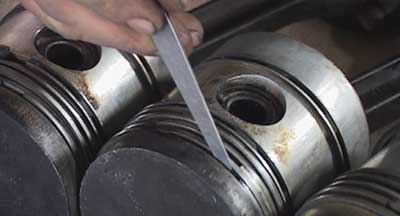
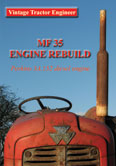
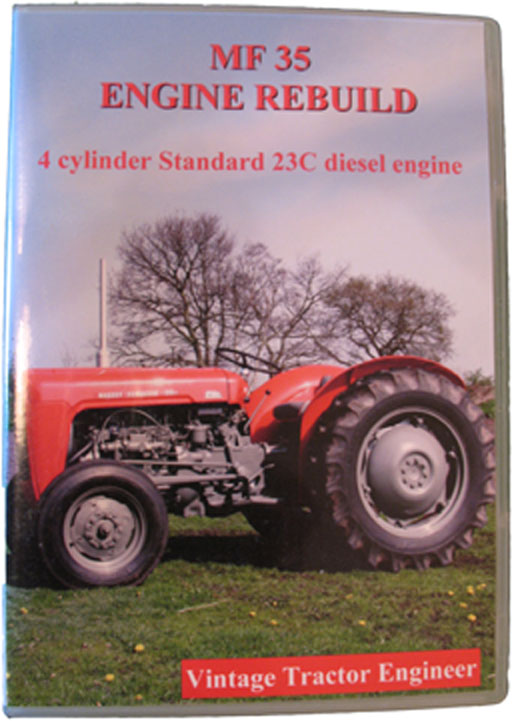
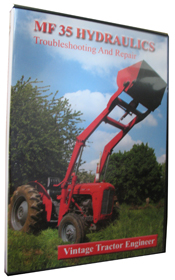
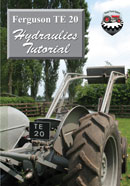
Hi, There is another way that is cheap looks good and works. Drill and tap in overlapping copper studs, cut off just proud and peened over with a ball-peen hammer. As most cracks happen to the water jacket, which only operates at <15psi, pressure is not a problem. Start just beyond the crack and fit the first stud, then drill the next one slightly overlapping, to lock the first one. Proceed along the crack and slightly further than the end of the crack. Locktite and other sealants are not required, the final rivetting seals all forever.
The hardest part is to find copper rod!
regards Nick.